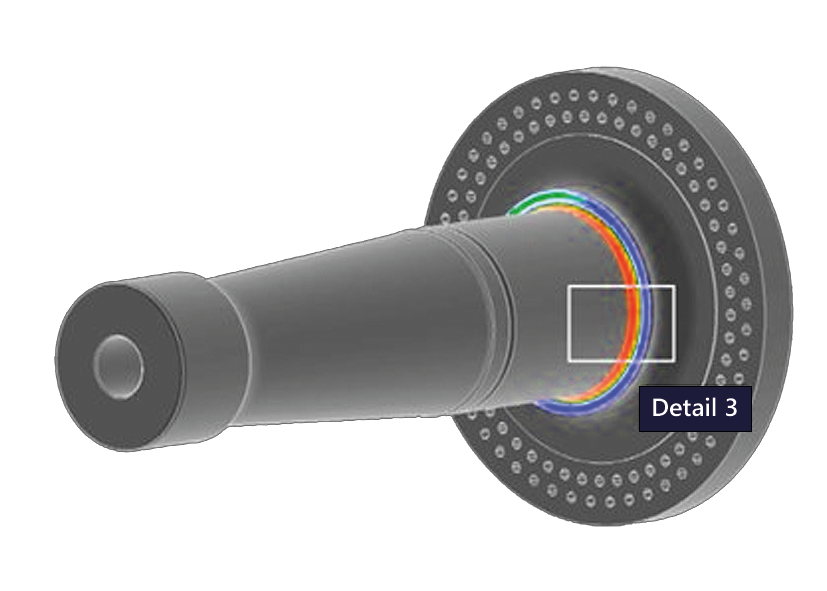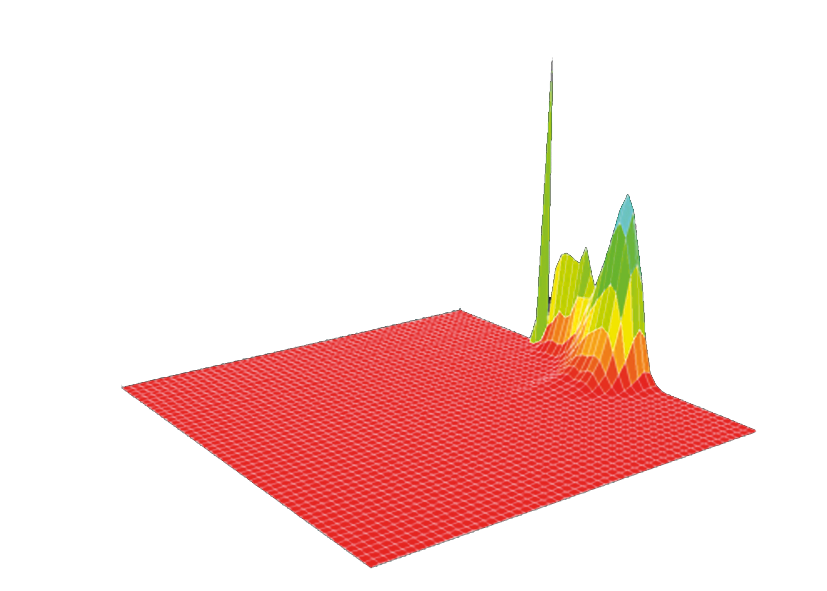Structural components´ fatigue analysis
BACKGROUND
Fatigue analysis of structural elements consists of conducting an assessment of said elements subjected to cyclic loads of variable magnitudes, but always lower than the extremes, to assess whether or not they can survive without failing during the set time said loads are applied.
This study is frequently decisive in the designing and development of components. SOLUTE contributes their vast experience conducting these types of analyses applied in different sectors and components, using different methodologies, always adapted to the specifics of each case. This way, the accuracy of the analysis ranges from multiaxial fatigue calculations with historical series of up to one year of load data, as occurs in wind components, to uniaxial fatigue cases for infinite service life requirements, and determining the service life of welds and adjacent areas.
The mechanical or structural components of machines and structures are frequently subjected to loads of a cyclic and dynamic nature that eventually cause them to fail from fatigue. This type of mechanical failure may be much more frequent than what occurs as a result of extreme or final loads, and therefore, are decisive in the designing of the component.
Any new product or machine designed for a specified service life.
RESULTS
Fatigue analysis consists of creating a damage map or a unique damage value in the case of discrete elements, which indicates whether or not the component will survive the estimated historical load. Since this is a map, it provides us with the location or the worst point where fatigue may occur and guides us in terms of the operation and maintenance of the potential locations where a crack may appear during an inspection.
On the other hand, in cases where the fatigue exceeds the analysis threshold, it is supplemented with the traceability of the preliminary finite element analyses to determine the reason why this value is above the threshold. With this determination of the root cause we can approach a redesign or develop modifications aimed at obtaining favourable results.
EXPERIENCE
Industrial sectors such as the wind, railway or automotive sectors, among others, require developing new products by conducting a detailed fatigue analysis. From its beginnings, SOLUTE has participated in the development of new products for these sectors, involved in the design and conception from the start, to the final certification and correlation. We have provided our customers with these calculations in a reliable and efficient manner to achieve designs capable of successfully exceeding their expected service life. For more than 15 years now, SOLUTE has been carrying out these types of analyses in these sectors, and applying their know-how to other specific cases.
The most effective cases applicable to the wind sector employ a multiaxial fatigue analysis using the critical plane method for highly accurate historical series, using rainflow techniques to determine the damage caused during an entire life of service, which allows extrapolating the damage due to fatigue for the estimated 20 to 25 years.
METHODOLOGY
The applicable method for carrying out the fatigue analysis must be adapted to the information supplied in each specific case. The more information is available, the more accurate the analysis can be and the less conservative the design.
This way we build an advanced finite elements modelling that allows determining the stress state of the static response of the load case. Models are created using commercial codes such as ANSYS, OPTISTRUCT, NASTRAN, etc. The finite elements modelling criteria is common to the advanced methodologies used for static cases.
With this stress state we have the basis to be able to combine it with the historical load data that is available. This is carried out using a specific post processing in some of the available tools, both commercial (HYPERLIFE, FE-SAFE, nCODE) as well as developed by SOLUTE.
The applicable regulation varies. The most common is to use Eurocode EC3 1-9 in the more generic cases, and specifically for the wind sector, follow DNV guidelines (DNVGL-ST-0361, DNVGL RP-C203,) and IEC 61400., plus one specific for the railway sector (for example, DVS 1612). The most effective cases applicable to the wind sector employ a multiaxial fatigue analysis using the critical plane method for highly accurate historical series, using rainflow techniques to determine the damage caused during an entire life of service, which allows extrapolating the damage due to fatigue for the estimated 20 to 25 years.
A particular application is determining the experimental fatigue, where instead of FEM modelling, we have experimental data to determine the damage based on these readings.
In the case of joints, we must specify the special attention that is worth giving to selecting the detail categories for welded joints in the interpretation of the Eurocode or categories of the IIW. And for bolted joints, we must even consider the discretization of the bolt to obtain information of its entire perimeter and verify the damage following the instructions provided in VDI2230.
The information obtained at the end of the analysis is always the estimated damage, which is accompanied with supplementary information of the structural cases upon which it is based for obtaining an understanding the cause that originated this localised damage.
Automotive
Aerodynamic analysis
Analyses and studies prior to the experimentation with prototypes, with the aim of ensuring each vehicle meets the requirements that will guarantee the best results in terms of energy efficiency, emissions and dynamics
Solar
Structural systems design for PV plants
Structural systems design phase analysis for calculating the generation of solar energy using photovoltaic panels in demanding environments such as with winds or earthquakes.

